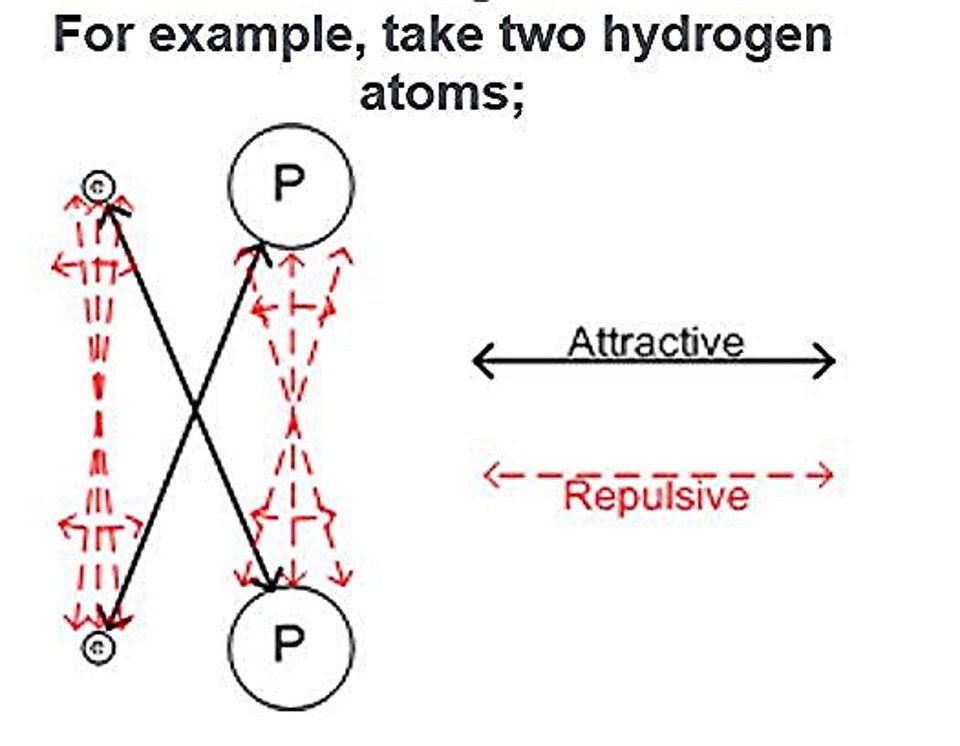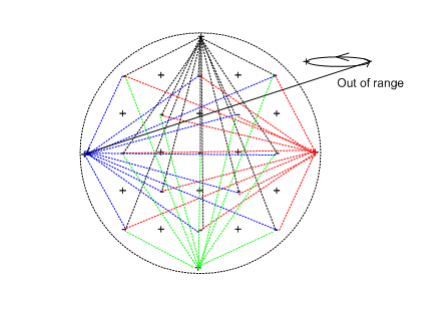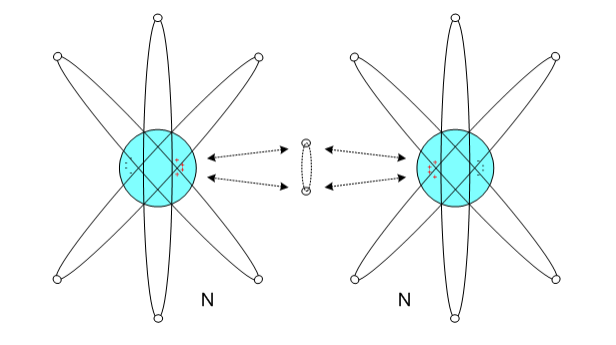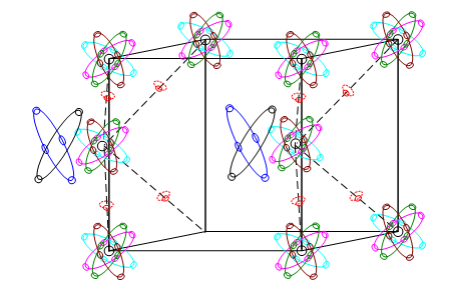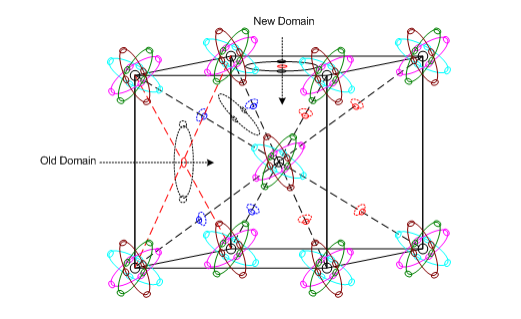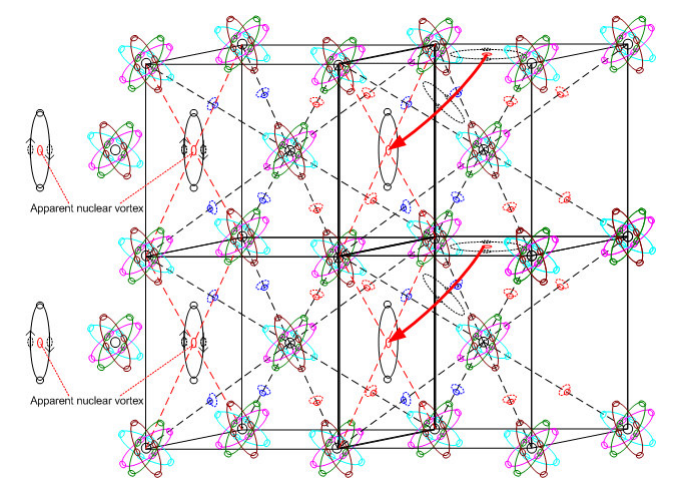Home Page - December 25, 2005
The last obstacle to developing The Unified Theory has always been solving the mystery of how Gravity works. This site is the result of 40 years of observation and reflection of how things work and why they work the way they do. The gravitational explanation contained is correct, self evident, and thus, allows for the rest to logically follow.
Observe how thin the atmosphere is compared to the Earth's Diameter.
The Atmosphere is only 5-9 miles thick compared the Earth's 8,000 mile Diameter.
Gravity is not a very strong force after all.
A Bit About Myself
Nuclear Physicist - US Navy Nuclear Program
E-1 Electrical Contractor in CT.
"Science is a wonderful thing if one doesn't have to earn a living at it." A. Einstein
Musician, Recording Artist, Songwriter, Singer. (Of sorts...)
Gravity and the Unified Theory are not unlike a musical composition where all parts have to fit together in harmony.....

With Acoustic Guitar, there is no finer Artist than James Taylor. His "Frozen Man" is my favorite and most difficult to play and sing for 4 min and 17 sec without a mistake. It reminds me of myself.... https://youtu.be/HiDihRfBY2M
My own composition; "Lady"; Recorded on a Fostex DMT 8vL 8 Track Simul-Sync Recorder. Played and sang all parts. Programmable Drummer with MIDI Interface, 7 of 8 tracks used. Pics from CA Trip. https://youtu.be/qk4hULhyJeA ©2000. More on the Music Page.
Gravity Quick Version
Gravity is said to be a "Distortion of the Space Time Continuum". But wait, why has nobody asked the question;
What causes the Distortion of the Space Time Continuum?!....
Hint: "The Electromagnetic Force's range is infinite." It's the law.
The answer is; Gravity is the weak electrostatic attraction between atoms.
Gravity is a simple Electro Mechanical System. The attractive forces are greater than the repulsive between atoms because the attractive work together. It's like two against one.
Because the repulsive and attractive are acting simultaneously, objects don't fall at the speed of light. (So to speak.)
Imagine each individual atom in the Earth is acting on each individual atom in your body. And as a side note, this is why all things fall at the same rate in a vacuum.
It doesn't matter how many atoms there are because gravity is working on each individual atom.
So now the realization arises;
There is zero gravity but great pressure at the center of the Earth.

To simply demonstrate how the Gravitational Force builds between atoms, observe the following drawings;
To physically experience the effect of Attraction and Repulsion, get two magnets and push the two N together. Notice how the two deflect.
Now try N to S and you will see they are always
locked in because they work together.
Electrostatics behave in the same manner.
The attractive are always greater than the repulsive.
Most will agree with my assumption that attraction
is greater than repulsion. But, I received this argument about the forces extending outside an atom;
“Orbits are an equilibrium of forces. One aspect of inequality is mass differences, but the forces are equal and opposite in Newton's mechanics”.
That is correct inside any particular atom if there were only one atom in the universe. Because the electromagnetic range is infinite, (It's the law and is self evident) There simply has to be a very slight attraction between atoms. For simplicity sake we will have to start with some Hydrogen atoms.
Observe this example of a two, three, and four Hydrogen Atom gravitational system;

Now, multiply this concept to equal the number of atoms in the Earth and everything on it, and there you have it! Gravity. Every atom in a system is interconnected. All atoms have different gravitational properties depending on their atomic number. It becomes a random additive field.
Or as Walter Babin said, "It's a Residual...."
Because the attraction decreases by the square as the distance doubles (from the collective source), the atoms closest to you under your feet are having greater influence than those on the other side of the planet.
So, If you are driving your car from say, New Haven, CT, to Ocean City, MD, a whole group of different atoms are taking over as you travel along. And, as you travel away from the Earth, it all appears as a point source.
So now all the below arises;
1. There is zero gravity at the center of the Earth.

2. A gravimeter lowered down the deepest oil well will show a decrease in gravity.
3. Gravity varies across the globe because of varying crust material as demonstrated by the USGS gravitational surveys in Nevada and Afghanistan.
4. Gravity is manifested in a "BEAM" form rather than a "WELL" as "you know who", worked it out........
The moon creates the tides;
The Moon actually cancels a portion of the Earth's Gravity causing a bulge on opposite sides of the Earth.

To me, all things are basically simple. Gravity is a simple. It's incoherent Electromagnetism. In that each atom is a tiny weak Electromagnet. (some better than others)They are not all pointed in the same direction and can't be aligned to do so as in an Iron magnet.
You are walking around on this planet. You have to admit, it feels like a big magnet. Bringing in a bit of Henri Poincare (April 29, 1854-July 17, 1912), and a bit of Walter Babin (1934-2000 - I do miss Walter), Gravity becomes;
The Dynamical Chaotic Residual of the Incoherent Electromagnetism of all the Individual Atoms Contained in an Object or System.
A picture is worth a thousand words and maybe 100,000 math formulas. Because gravity is a Dynamical Chaotic Residual, it cannot be discovered through mathematics. Gravity must be visualized as a mechanical system that can be then generally described by mathematics. It's simple;
The more atoms you have, the more gravity you have!!
Thank you for your time.
Falling Objects in a Vacuum
Early on in this website endeavor, I had received an email from Joe Nahhas and the subject was “Gravity Bumber”. The email simply said “All things fall at the same time.” I assumed he meant rate.
My reply was “The difference in mass between a feather and a bowling ball falling in a vacuum with respect to the gravitational field of the Earth was zero.”
I thought that was sufficient and sounded like a good answer and I never gave it much thought after that. But then one day, I was watching “The top 100 discoveries in physics” on the Science Channel. This show had “Bill Nye the Science Guy” talking about gravity and how all things fall at the same rate in a vacuum.
He was at a site where a large vacuum chamber was constructed in order to drop objects of different sizes to accurately measure their rate of fall. The sizes ranged from small items to 5 tons. It started me thinking that maybe a more detailed explanation was in order.
If we recap the gravity explanation; It’s a dynamical chaotic residual. It’s weak incoherent Electromagnetism. Think of it as each atom in a object is a tiny spinning Electromagnet. They’re not all pointed in the same direction. They can’t be made to do so. That’s where the “Dynamical Chaos” comes into play. (And math out of it)
It takes a tremendous number of atoms for the gravitational field to be of consequence. Something like the size of the earth. The reason all things fall at the same rate is this;
As a bowling ball or the 5 ton weight is hanging in Bill Nye’s vacuum chamber by the suspension cable, they have a weight that can be measured by a load cell in line with the cable. This is because all the atoms in the suspended weight are chemically bound and are grouped. The sum of the group is its weight. The instant the cable is released, the object becomes weightless.
It doesn’t matter how many atoms are in the object at this point because the gravitational Aether acts on each individual atom contained in the object.
It is of no consequence how many atoms are in the falling object because gravity acts on each individual atom in the object. It is only when the object comes to rest on the surface, that the object can be again weighed.
The rate of fall is set by the repulsive forces.
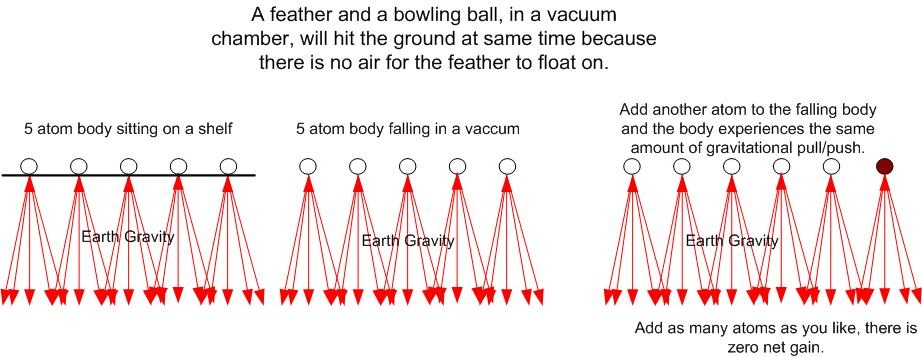
Gravity goes through solid objects because all matter is mostly empty space between it's atoms.
Thank you for your time,
Eric Sabo
P.S. A Bill Nye side note; I was watching "Larry King Live" in ~2006. Bill Nye and Edgar Mitchell were on. The topic was UFO's. Bill Nye, a UFO non-believer, was in the studio and Edgar Mitchell was remote. It was a good thing as the discussion was heated. I swear Edgar Mitchell would have punched Bill Nye in the face if they were both in the studio.
Edgar Mitchell piloted Apollo 14 to the moon, 6th man to walk on the Lunar Surface and was actually from Roswell NM. Edgar Mitchell knew all the people their and their stories.....
The Dark Matter/Aether (DMA)
The Dark Matter/AetherAuthor;
Eric SaboFebruary 12, 2025
The speed of science is slow. Little more than a snail's pace.I have been quietly observing all the latest research and findings for the past 15 years. I suppose I look at things more like Enrico Fermi than anyone else. I think he was fairly annoying to the mathematicians. Like, when he suggested they might ignite the earth's atmosphere when they were going to test the first atomic bomb.
It seems like common sense that gravity is a beam instead of a well. Gravity is incoherent electromagnetism. “A residual” as Walter Babin clarified. But more on that later. Instead, I have always looked at the Neutrino with a jaundiced eye. The Neutrino came to be when scientists were looking at Muon decay. There was an unaccounted for loss of mass. They came up with a neutral unobserved particle and were looking for a name. That's when Enrico Fermi, being a prominent Italian, came up with Neutrino as a joke. “It's a Neutrino” - like Bambino! Apparently, it stuck.
It only seems logical that the loss of mass in Muon decay is the mass is lost directly to the Dark Matter/Aether (DMA) realm bit by bit. When a Cosmic Ray hits the atmosphere, it quickly becomes a Muon. The Muon could lose mass directly to the DMA.
That would mean there is no such thing as a Neutrino. In fact, any sub atomic particles, such as those discovered at CERN and Fermilab, are totally artificial and don't really occur in nature. They all only last for the tiniest fraction of a second before “evaporating”. The only logical place they can “evaporate” to is the DMA.
They are always building Neutrino detectors and claim to be detecting Neutrinos. But, what they are detecting could be just the random bit of Muon that luckily made it all the way to the detector. Or, even a random decay in the adjacent rock.
The work they do at the very large particle accelerator that straddles Switzerland and France (CERN) is important for the powerful electromagnetic confinement magnets that are being developed. It could be important for future confinement of Anti-Matter. (If that is even possible)
The DMA is totally undetectable. You can't see it with the most powerful microscope. So, how can we prove it exists? Well, a while back, I was watching a report by an amazing gentleman Anton Petrov on YouTube. He files a report on things from James Webb Telescope to Viruses and Bacteria. He filed this report;
“Hubble Uncovers Mystery Glow Inside the Solar System, But What's Causing It?”
Anton Petrov; https://www.youtube.com/watch?v=biCCNrTNk0s&t=2s
The only conclusion I came to was, the DMA was glowing. All the solar wind particles and radiation flying through the DMA is losing some energy to the DMA on it's way through. Whatever the DMA can't retain, the excess is emitted as the glow observed by Hubble. That would be one proof the DMA exists.
But that creates another problem. If the DMA picks up a tiny bit of energy as radiation passes through it, that means the light from the most distant objects in our universe would be red shifted from passing through the 13 Billion light years of DMA.
But wait, if the light from 13 Billion light years away is red shifted by the DMA, that means the red shift of those objects is not the result of them moving away from us. Therefore, the universe is not really expanding at all. So much for the Big Bang Theory. So now we should look at gravity as a beam in stead of a well. I mean you could work out the math as if it were a well. The gravity beam just seems more logical. The earth/moon gravity beam cancels the earth's gravity a bit through the plane and creates the tides on both sides of the earth as the moon orbits around the planet. This creates High Tides every 12 hours. If gravity were a well, there would only be a high tide every 24 hours on the moon side of the planet. But, the moons gravity cancels the earth's a bit allowing the ocean to float more towards space.
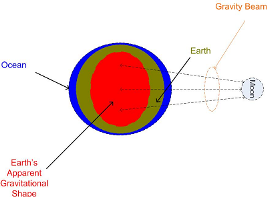
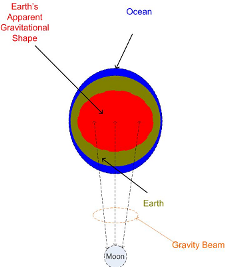
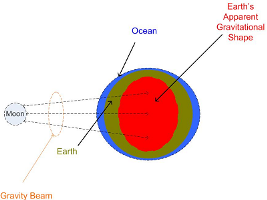
So, There is a gravity beam between the earth and the sun. Actually it would be between the earth-moon system and the sun. There would be gravity beams between all the planets in the solar system and the sun. Also there would be gravity beams between all of the planets in the solar system. All of these different gravity beams might be what the Laser Interferometer Gravitational-Wave Observatory (LIGO) in Hanford Washington are detecting.
This is the size of the planets in Astronomical units. ( One AU = 93,000000 miles.)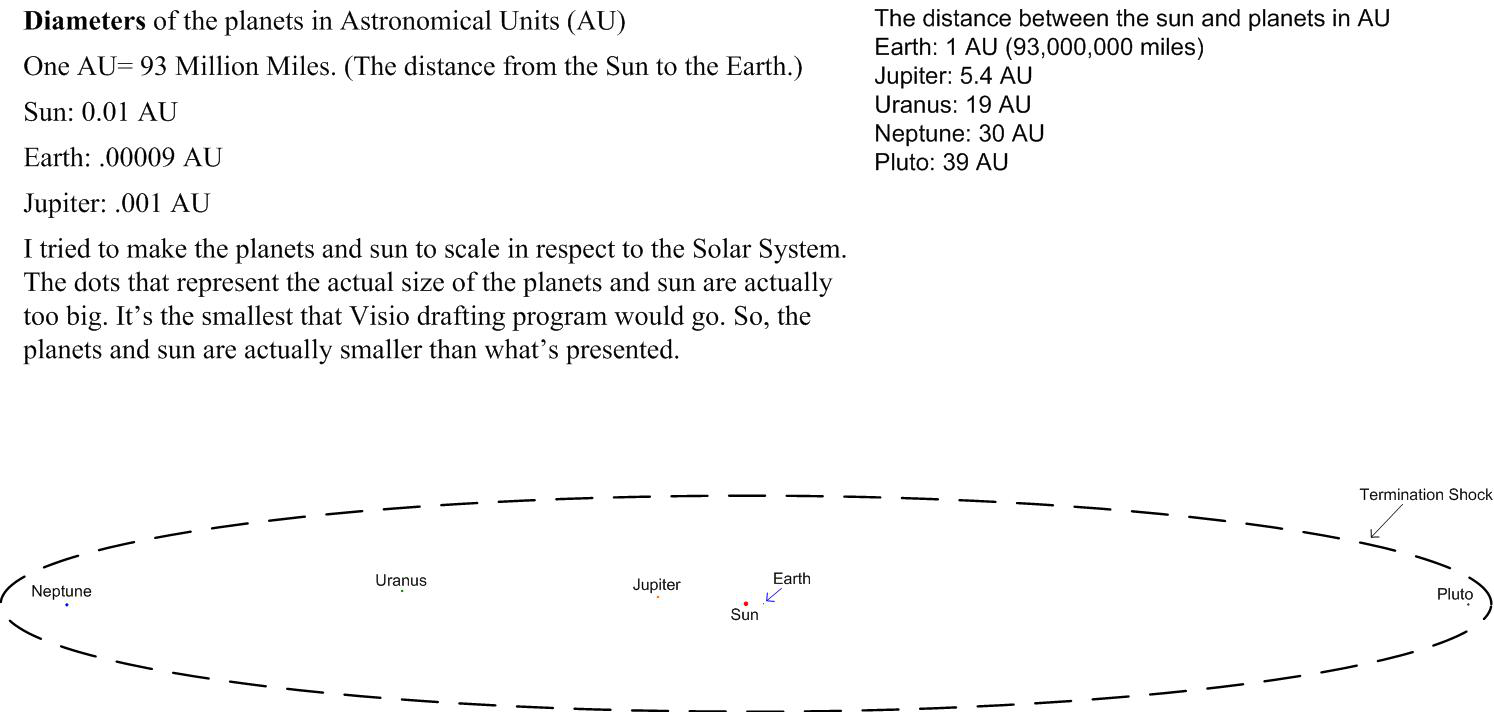
Gravity Beams between Planets and Sun;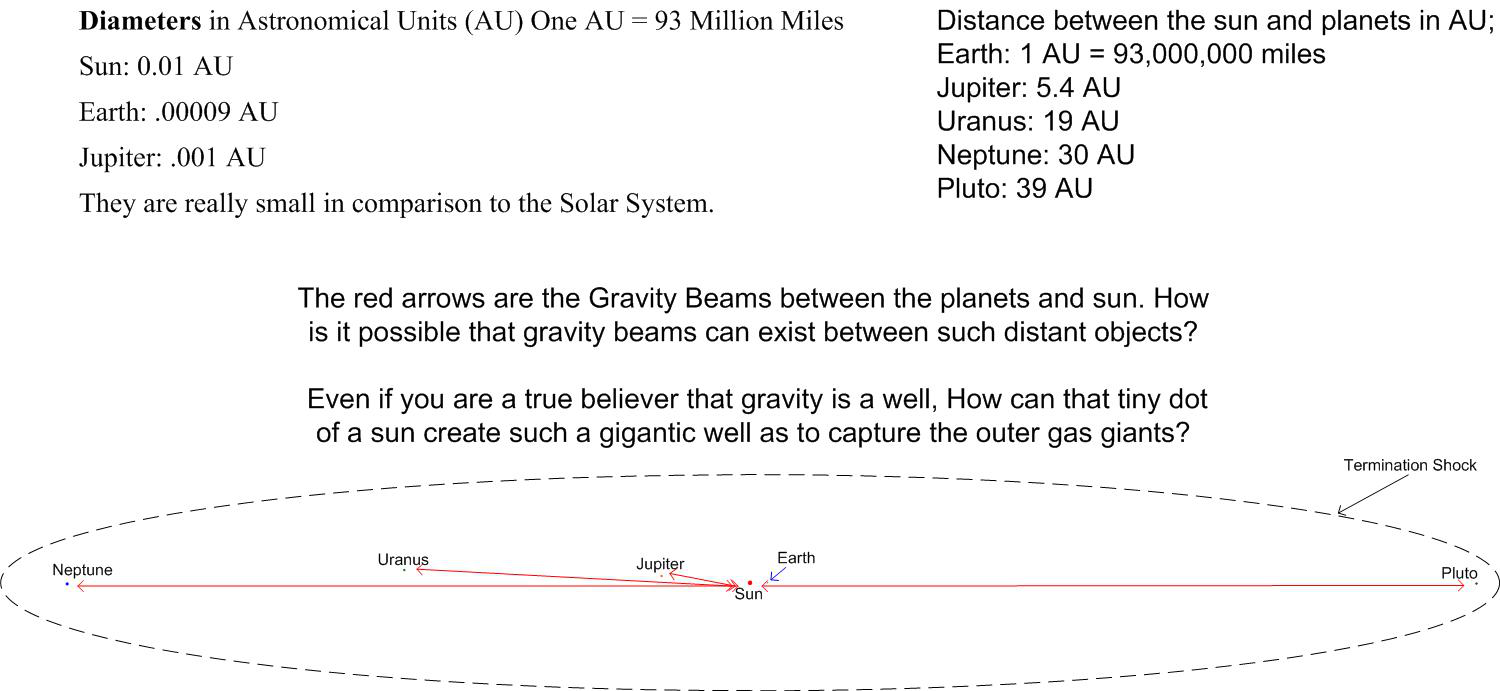
The answer can only be that the DMA (which would also orbit the sun) holds the entire Solar System in place. The DMA has a collective gravity. The DMA also concentrates along all the various gravity beams greatly adding to their strength;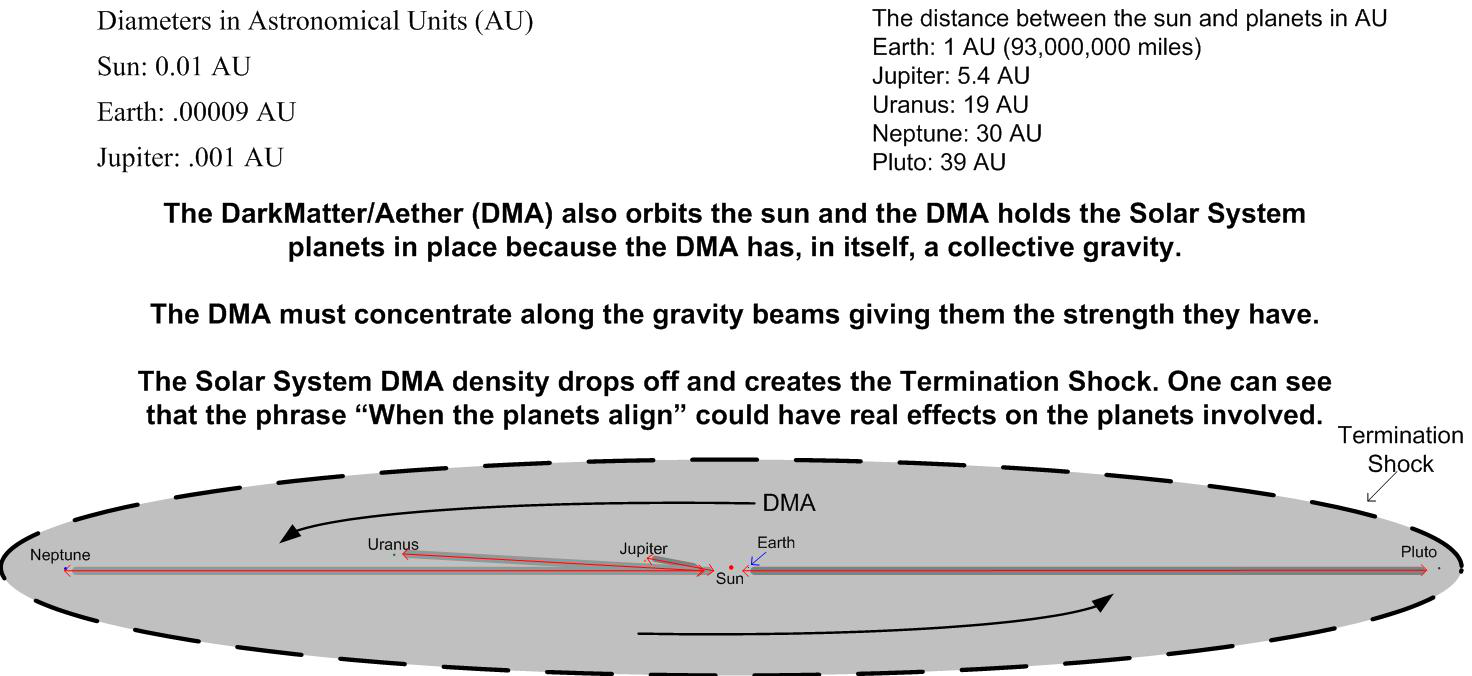
One can see that “when the planets align”, their respective gravity beams would overlap. The crackpots might be right on this. It might be a very slight force on the earth. But, say there is an earthquake hanging by a thread waiting to happen and the planets align. It might be enough to set it off and have it all come crashing down.
Gravity Beams exist between all the objects in the solar system forming a complex web. Between earth and mars, between all the asteroids in the belt and earth, and on and on. There would be massive gravity beams between galaxies. They might look something like these images from several telescopes.
Again, Anton Petrov; https://www.youtube.com/watch?v=YvSDfHEFRZ4
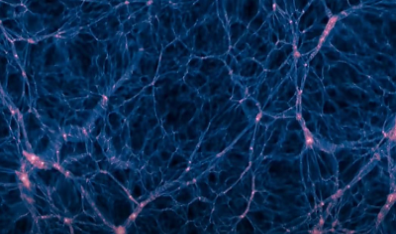
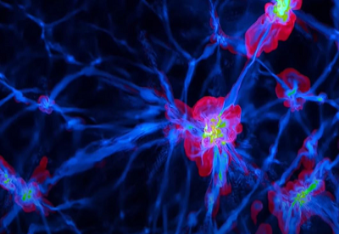
My personal view of gravity is; Every individual atom in the earth are like tiny spinning magnets. They are not all pointing in the same direction. Each one of those earth's tiny magnets are attracting every individual atom in my body. And, all of this is occurring simultaneously. And, when I sink into the mattress at night, the earth's gravity, to be sure, feels like a gigantic electromagnet.
As for the Termination shock, I imagine the charged electrons and protons that reach to point where ambient DMA pressure drops off, they can't maintain their structure and decay shedding some part back to the DMA. Cosmic rays are massive enough to survive.
It is also logical that light and cosmic rays from outside the termination shock suffer a bit with the encounter with the increase in DMA density at that point. Are the radio signals from the 2 Voyager craft that have both crossed the Termination Shock altered in any way? Not much information exists about the Termination Shock. My thinking is that they didn't name it the Termination Shock for nothing.
At the end of the day, my view of the universe, from sub-atomic particles to super nova is, it's entirely Dynamical Chaos that manages to fall within parameters.
Thank you for your time,
Eric Sabowww.howgravityworks.org
Other Observations
Other Observations
Author; Eric Sabo
April 25, 2025
The Neutron The neutron is a particularly odd sub-atomic particle and there seems to be little discussion about it. For example; A free neutron decays to an electron and a proton in around 14 minutes.... A neutron somehow expels a negatively charged sub-atomic particle and a positively charged sub-atomic particle remains.
It becomes obvious that the neutron contains both positive and negative elements. I never forgot the question I posed when in the Nuclear Navy atomic fission class back in 1969. The instructor stated that the neutrons in the reactor had to be slowed down for fission to occur. I asked; “Why do they have to be slowed down?”
His answer was;
“I don't know. Nobody knows.”
I never forgot that unacceptable answer. In 2006, it finally occurred to me that because the neutron obviously has both positive and negative elements. And, the only possible reason they have to be slowed down is, TIME. It is the relatively small amount of time for the negative elements in the neutron to position themselves for the neutron to be able to attach itself to the positively charged nucleus of the U-235 atom.
Once attached, absorption of the neutron proceeds into the U-235 atom nucleus and that causes the U-235 atom to fission. Now the question remains; Why does the free neutron decays to an electron and a proton? The only answer I could come up with is, the ambient Dark Matter Aether (DMA) and other ambient atoms, create the conditions for the neutron decay and fit into the ambient environment.
But what if we could force the neutron decay into the opposite of the electron and proton. That is; a positron and, for lack of a better term, a Negatron. A positively charged electron and a negatively charged proton. Anti-Matter.
In 2008, I came up with a design for a device that might just do that. The device could produce Anti-Matter in a continuous stream. An Anti-Matter Generator.
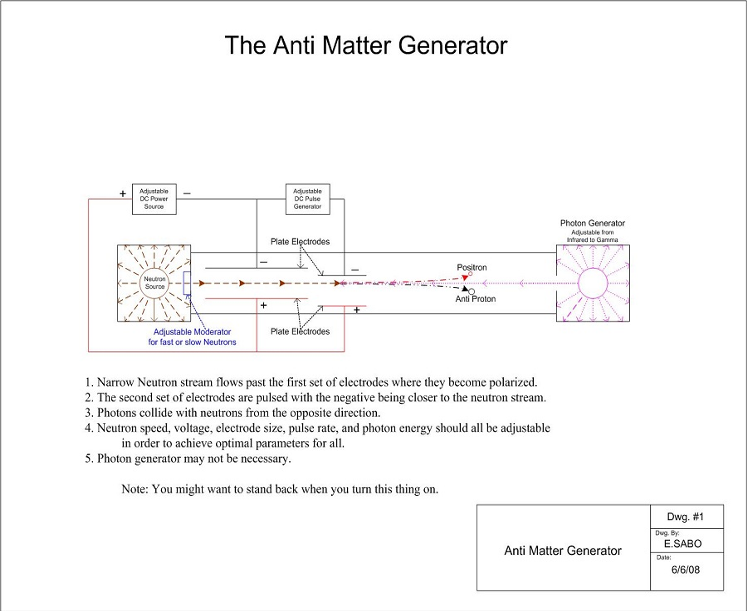
Another peculiar aspect of neutrons and protons is, they don't seem to have a set size. As you proceed up the periodic table of elements, the size of the nuclei do not increase in size as expected. I found this interesting Periodic Chart of the Elements that goes by Atomic Size. 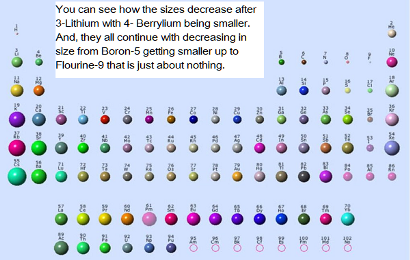
The atomic size appears to expand at the ends of the table and the decrease in size again takes place as atomic numbers increase up from left to right. The accepted version is that the electron 'Cloud” shrinks. But my view is that the nucleus shrinks. When we see the standard view of the nucleus, we get something like this;
For example; Atomic Number 2 - Helium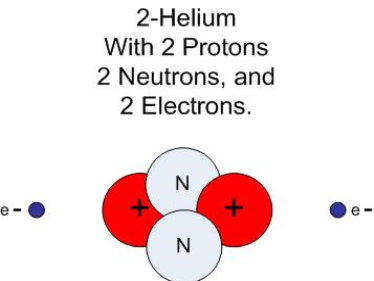
But it seems more reasonable that the protons and neutrons in the nucleus would actually combine to form a fluid of their internal positive and negative elements. The nucleus would then appear as something more like this;
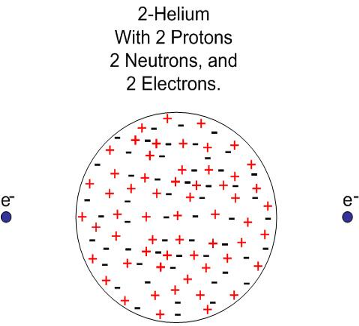 The surface of the Nucleus probably resembles something like what we had a recent experience with. With a positively charged nucleus, the positive elements would protrude on the surface;
The surface of the Nucleus probably resembles something like what we had a recent experience with. With a positively charged nucleus, the positive elements would protrude on the surface;
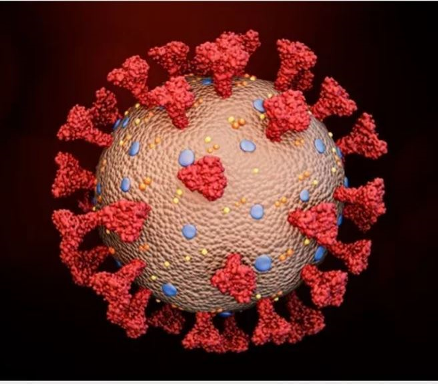 As the atomic number increases, the number of positive and negatively charged elements increases. This would would cause the nucleus to compress much like gravity compresses the interior of the planet. There is zero gravity but great pressure at the center of the earth.
As the atomic number increases, the number of positive and negatively charged elements increases. This would would cause the nucleus to compress much like gravity compresses the interior of the planet. There is zero gravity but great pressure at the center of the earth.
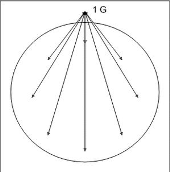
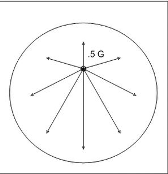
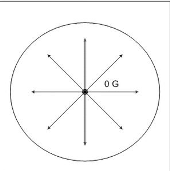
When I decided to take on the challenge of determining the cause of gravity, I envisioned it as a mechanical system because it seemed to me, that it is what it is. My observations over the past 15 years have led me to some other questions and speculations.
After my Dark Matter Aether (DMA) paper, some other topics in the Theoretical Physics realm have me contemplating problems that the DMA presents.
"c"
The universal constant for the speed of light, “c” works out to be, 186,282 miles/second. That would be 670,615,200 miles per hour. But it occurs to me that if Dark Matter/Aether (DMA) density drops off at the Solar System's Termination Shock, the speed of light might be different outside the Solar System. Therefore “c” might not be a universal constant.
Lagrange Points
Lastly, and on a different matter, I always found it curious that Lagrange Points actually exist. After much thought, it is my opinion that Lagrange points are the convergence of Gravity Beams and DMA Gravity. This convergence is responsible for creating these ghost like gravitational null points in space. \
I chose to use the Moon of Earth points as an example;
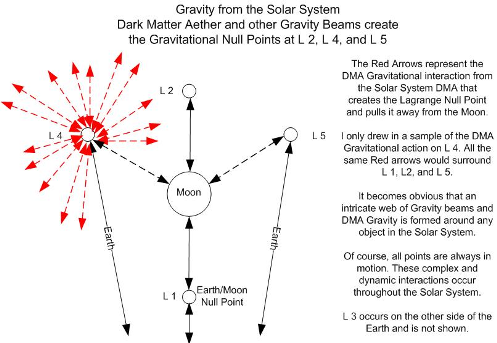
I'd speculate that these Lagrange points do not maintain an exact distance with respect to each other continuously. It seems they would more closely float around in their same general positions as the moon revolves around the Earth and the influence of all the various gravity beams, would be continuously changing.
Thank you for your time,
Eric Sabo
Anesthesia, Consciousness, and Telepathy
Anesthesia, Consciousness, and Telepathy
Author: Eric Sabo - May 25, 2025
"All things being equal, the only explanation tends to be the correct one."
The paper published by Stuart Hameroff, Craddock and Tuszinsky from Univ of Arizona;http://www.newswise.com/articles/consciousness-depends-on-tubulin-vibrations-inside-neurons-anesthesia-study-suggests
This paper is the result of my trying to reason with my own numerous and mysterious experiences with various “Qualia” over my lifetime. It occurs to me that most ordinary people will probably never experience, or never notice they have experienced “Qualia” because they are too busy with the every day activities of their existence and never give them a second thought. Hence, Telepathy and “Qualia” are given the same credence that Bigfoot and UFO sightings are. (Ridicule.)
Thank you for your time,
Eric Sabo
Nuclear Fission
For a Pressurized Water Nuclear Reactor, Uranium is enriched to achieve 5% U-235 and 95% U-238. U-235 occurs at 1% in nature and is what makes the process happen. The mixture is formed into pellets. The pellets are placed into long tubes which are then arranged with spacing for cooling water channels into what are called fuel assemblies.
The fuel assemblies are shipped by truck to the reactor site. They're not highly radioactive. There are some spontaneous fissions but the resulting Neutrons are fast Neutrons. Fast Neutrons just bounce off the U-235 nuclei.
It is not until the fuel assemblies are installed into the reactor vessel and water is added that things start to happen. Boron control rods that absorb Neutrons stop the reaction from starting. The control rods are slowly withdrawn to expose a portion of the reactor core to itself. Spontaneous fission neutrons enter the water channels striking Protons in the water, slowing them down. (Not unlike a queue ball striking a billiard ball where the queue stops and the billiard ball moves on.)
The slowed neutron then migrates through the water channel into adjacent fuel where it encounters a U-235 atom, is “absorbed” and the U-235 subsequently fissions. The fission rate proceeds and a criticality factor = 1 is maintained. That is, one fission creates one more fission, no more, no less. The Boron control rods are periodically withdrawn to expose new U-235 as the initial exposure starts to burn out. The water has two functions;
1. It provides cooling.
2. It is the moderator that controls the fission rate. Neutron's have to be slowed down because fast Neutrons just bounce off the U-235 nuclei. Too much fission and the water heats up, becomes less dense and less Neutrons are slowed down decreasing fission rate. Cooler water, more fission occurs. The water moderator maintains the criticality factor = 1. The Reactor is in a sense, Self Moderating.
In addition, some of the U-238 absorbs some of the slowed neutrons. It becomes U-239 which decays by Beta to become Neptunium 239 (Np-239) which again decays by Beta to become best friend, Plutonium 239. In effect, the reactor manufactures more fuel for itself. In fact, Fast Breeder Reactors
So, the big question is;
Why do the Neutrons have to be slowed down?
(If you liked anything up to this point, You’re going to love this.)
The answer is; Time........
Given that a "Free" Neutron decays to an Electron and a Proton in about 14 minutes, it's obviously a particle that contains both Positive and Negative components.
A slowed Neutron has the very small amount of time required to become polarized in order to attach itself to the surface of the U-235 and subsequently be absorbed to cause fission to occur. Observe;
Bombs are different. It is desirable to go from a criticality factor of .9 to 2 in less than 10 generations. Introducing Tritium into a Pu-239 pit just prior to detonation provides an abundance of stationary neutrons for fission. Also a Be-4 reflector slows and returns first generation detonation Neutrons to the pit giving us a most efficient 5 kiloton yield from a less than non reflected critical mass.
The Matter- Antimatter Reaction
The Matter-Anti Matter Reaction
Jan 31, 2008
Author; Eric Sabo
Because, “When you have eliminated the impossible, what ever remains, however improbable, must be the truth”: Sir Arthur Conan Doyle, all of the following should be correct;
The Matter-Antimatter reaction gives us true insight as to the composition of matter. It is unimaginable that we have all not contemplated at least some of the scenarios expressed in this paper at one time or another.
First, if matter can be converted into energy, then it must be that energy can be converted into matter. How could this process work? It has been suggested that light (Photons) have dual states, a particle and a wavelet. Why not three states, a particle, a wavelet, and a fluid?
The fluid state being what exists inside protons, neutrons, and electrons. Being that photons come in a wide variety, from infra-red, through the visible spectrum, ultraviolet, to x-ray and gammas, what makes them all different is their frequency or rate of oscillation. What makes them oscillate? Why not a very small positive and negative charge revolving around each other? Observe;
Photon;
The frequency is the rate the charges revolve around each other. The greater the frequency is, the greater the energy the photon carries. The photon travels through a vacuum as a particle. When encountering a medium such as the earth’s atmosphere, it leap frogs through the medium, the charges pulling each other along, interacting with the medium in a wide variety of ways depending on their frequency. It appears as a disturbance in the medium.
For example, in the visible spectrum, blues scatter making the sky blue and reds travel straight through making a red sunset. Radio frequencies emanate from an antenna, initially as a photon, creating cascading disturbances that appear sand propagates as a wave.
Continuing the idea that photons do contain a minute positive and negative charge revolving around each other. Call them “Aether Halflets”, a +Halflet and a - halflet. Observe below;

In the matter-antimatter reaction, a proton and anti-proton (Negatron) approach each other. They spiral around each other until they come into contact. When that happens, both are totally converted to energy in the form of photons. TOTAL Annihilation...This is a true statement.
I am referring to the Anti-Proton as a Negatron to fit in the drawing. Also, the same below illustration applies to the Electron-Positron annihilation.
 With the proposed Halflet model, this is how such an event could occur; The proton has +Halflets on its surface and the negatron -Halflets on its surface.
With the proposed Halflet model, this is how such an event could occur; The proton has +Halflets on its surface and the negatron -Halflets on its surface.
When they come into contact, the +Halflets and -Halflets combine, pairing up once again to form Gamma photons, one at a time. When the Proton and Negatron come into contact, they pull each other apart.

The Halflet pairing proceeds very rapidly until nothing remains. It's obvious that far more Gamma Photons would be produced from the Proton-Negatron Reaction than the same Electron-Positron annihilation.
This may be too extreme for most. But, the above photon model would explain why photons are affected by a gravitational field. (Gravitational Lensing) The positive element is attracted by the field negatives and vice versa.
So now we have to ask; How is Matter actually created? How could these photons be converted to matter? Well.... In a nova or supernova event. At the Ablation Boundary.
The overwhelmingly large forces exist at the Ablation Boundary capable of performing the task. Perhaps, even inside or own sun it may be possible for the process to occur. Immense radiation pressure brings photons into close proximity. Observe the following drawings with a small portion of photons depicted;
Once in close proximity, all the photons positives and negatives attract. (Only a portion of the lines are drawn in)

All the charges interlock in stasis forming a free neutron. (Only a portion of the Halflets and lines are drawn in)

Why does the free neutron have a discrete size?
The Free Neutron (or Proton and Electron) size most likely falls within a small range. At the edge of that range, a fall off of attraction occurs that manifests itself in a manner not unlike the buckling effect in a nuclear reactor. Photons that are outside the free neutron boundary, form into other neutrons or fly off as radiation.
Once a free neutron is formed, it can be “popped” to form hydrogen, with one proton and one electron. When this occurs, the proton surface has an equal number of P-halflets to Nhalflets on the electron’s surface. (Only a portion of the halflets and lines are drawn in)

When a neutron is incorporated into a neucleus, because the Halflets are fluid, their distribution can be influenced by adjacent protons or neutrons.
A neutron’s and proton’s proportions (or Halflet content) in the nucleus change as the nuclear size increases up the periodic table because of total nuclear halflet content.
The nuclei increase in atomic number up the periodic table (mass increase not being linear) to reach a point that the nuclei become increasingly unstable until the limit (end of the table) is reached.
This process is similar to the Free Neutron size limit. Obviously, there are no Antimatter neutrons.
So why is then, is the Free Neutron "Popped" (Or Decay) into a Proton and Electron in ~14 minutes?
The Free Neutron is pulled apart by the ambient environment of other Molecules and Atoms.
Thank you for your time.
“When you have eliminated the impossible, what ever remains, however improbable, must be the truth”: Sir Arthur Conan Doyle
The Atom
The Atom
Author; Eric Sabo, East Haddam, Ct.
Mar 1, 2009
In 1913 Neils Bohr, based on Rutherford’s 1911 model, suggested that electrons orbit the atom’s nucleus like the planets in the solar system. To this day, there is no photographic evidence that this is a true statement. (I do, however subscribe to it.) Wolfgang Pauli introduced Quantum Mechanics in 1925 to rectify inadequacies in the Rutherford-Bohr model.
Pauli proposes that electrons pair up in energy levels. What immediately jumps out is why would two negatively charged particles pair up at all unless they were in orbiting 180° from each other? If they are assigned an opposite spin, conveniently, pairing becomes possible.
Scientists always have a need to have everything fit into neat quantitative packages. This is true in electron configuration, sub-atomic particles, and quark models. Myself, I think that Henri Poincaire’s Dynamical Chaos comes into play more than not.
More accurately, it’s all about Dynamical Chaos that manages to fall into parameters. The thought occurs to me that in the case of the Hydrogen atom, if we bring the Aether "Halflet" scenario into play, and incorporating Quantum Mechanics, it becomes possible the electron manifests itself as a spinning cloud of its Halflets.

The electron becomes a quantity of Halflets. The cloud finds the radius as the balance point between repulsion, attraction and centrifugal force. The cloud could change shape depending upon the atoms role in molecular construction.
An electron then takes particle form when pulled out of the cloud to form a molecular bond. Also, when a photon strikes the cloud, it is absorbed, expanding the cloud. Too much expansion and an electron mass then pops out creating havoc.
To rejoin the cloud, either a photon or more has to be re-emitted or a chemical bond is formed. As far as EM spectral emissions go, electrons pop in and out of the cloud emitting the photons necessary to produce the emissions depending on the atom and cloud size and density.
Not suggesting any should change horses midstream, Here is an idea drawn up with a drafting program with the cloud displayed as electron masses. This becomes useful to illustrate atomic balance. It seems logical the cloud would possess some gyroscopic stability.
With Helium we see;
The Helium atom is balanced like a gyroscope, therefore stable. It is possible that electron arrangement changes to become the most gyroscopically stable to fit each atoms role in any given situation.
When we move up to 3Li-6, that’s where Poincaire’s Dynamical Chaos comes into play again. The cloud is not given to symmetry. It is at best an unhappy arrangement;
It becomes apparent that 1, 2 and 3 electrons are the magic numbers for valence electrons. After that groups of 4 and combinations of 4 and 2 electrons are the stable elements. 1 electron quantity up or down and fireworks happen. Lithium is highly reactive. Put some Li in water and LiOH is quickly formed.
When it comes to chemical bonding, the shared electron quantity no longer travel in the shell. They electron quantity exists as a particle at a point 2x normal electron shell. The Lithium two unshared then pair and gyroscopically stabilize. LiOH is still reactive. It seems possible that the distribution of charge on the surface of any nucleus could vary to fit any given situation.
Moving up to 4Be-5, it has 4 electrons. With proposed 4 electrons orbiting in equal distribution to one another. It looks pretty stable. It becomes obvious that all electron quantities in any atom all exist in one shell.Their distribution is governed by their relation to one another and influenced by surrounding atoms.
If we could go back to hydrogen, we must address diatomic Hydrogen. This arrangement arises. Notice the distribution of charges on the nuclear surface that prevents more than a diatomic arrangement from forming. The two hydrogen share the two electrons in a bond that is not as strong as a molecular bond. It is a secondary bond.
Diatomic Nitrogen;
Diatomic Oxygen;
The water molecule;
Where is the 105° angle? Because we are looking at a single atom there is none. If the universe consisted of one water molecule, the above is what it would probably look like. Most likely, the above is what it looks like in vapor form. As cooling occurs, the distance between the nuclei decreases. Below would be the liquid where the molecular bonds wobble and flex, cushioned by the rest of the electrons. In these configurations the molecule is actually sort of tri-polar, with 2 positive ends and a negative center doughnut;
It’s in the solid form that the 105° angle appears. The angle is caused by the surrounding atoms and decreased space between atoms;
It's probably a safe bet it is the reason Snowflakes take on a Hexagonal shape.
The bottom line is, electron shell shape and molecular configuration is influenced by all the surrounding atoms.
Where we are going with this is the Iron atom. With all the electrons in one shell with equal distribution, I have four electrons per orbit in six orbits (24) and the last two in black (making 26) all running in sync. It looks pretty stable with the pair of 2 being the oddball. It does not exist in the real world as it is usually bound to something.
We are led to the following to explain magnetism. Apparently, above 912°C, the crystal structure of iron is Face Centered Cubic. (FCC) This is the best rendition I could come up with. Bear with me. The center of the face has the atom with 22 orbiting electrons (5 groups of 4, a pair, and four bonding = 26) In these drawings the remaining orbiting electron quantities become irrelevant to the process.
At 912°C, the crystal structure changes to Body Centered Cubic. It’s at this point that Poincaire’s dynamical play into the operation. To go from FCC to BCC, The number of bonds between atoms goes from 4 to 8. In the transition, 4 electrons have to make the jump. But which 4 will it be? I suggest it is a random call. But, before it is settled, more than four start to make the jump. I have chosen the four blue and the black pair. They start to leave orbit.
Suppose the four blue are accepted as the bonds. The black pair have started to make the jump also. The black pair continues on and lands mid-point between the adjacent nuclei. They then orbit around an apparent nuclear vortex created mid-point by the adjacent nuclei forming a secondary bond not unlike H2, N2, and O2. In BCC structure only 16 electrons remain in orbit. (16 + 8 bond + black pair =26)
Because there is still too much energy in the crystal the black pair is oscillating and wobbling. Also, the transition proceeds in two directions – horizontal and vertical. As the iron cools, the space between atoms decreases.
At this point we have some secondary bonding black pairs at the left and some at the top. When the Curie point (770°C) is reached, the spacing and relation of all the atoms become tuned to stabilize the black pairs.
Because magnetism is self reinforcing, the black pairs begin to align themselves locally. The alignment grows and cascades through the iron (probably in the direction of greatest length) and the iron becomes magnetic all by itself.
At this point, it is all a pretty delicate balance. As cooling and contracting progresses, it is in a non uniform manner. Some black pairs jump to find the a more accommodating location and the iron demagnetizes.
Eventually at room temperature, the black pairs have stabilized in various directions. Whole regions have aligned to form domains. But overall, they are not pointed in the same direction. Take an iron bar and put 100 VDC potential across it for a few seconds, and all the black pairs migrate to the same face and voila! A magnet!
There is a void at the right face center and protrusion at the left. Thus North and South poles are produced and reinforced by each atom in the line. Place an iron bar at one end and it becomes an extension of the magnet. Leave the bar there long enough and it retains some alignment. Bang on a magnet (compressing and deforming the structure) or heat it (add energy), the pairs jump out of alignment and focus is lost. Here is an end view;
Thank you for your time,
Eric Sabo
My Thoughts on Gravity and the Unified Theory
I have been selling this idea for years with little success. When Walter Babin saw it as a “residual”. I liked that viewpoint. When I asked him “Why does no one see this mechanism as a viable explanation?” He offered;
“Whether it’s a vested interest or Pavlovian response, they cling to their beliefs like religious zealots.” -Walter Babin
Those are powerful words that reflect a truthful perspective no matter what the field of endeavor. I, myself think three things;
1. The current thinking in this area is built on 17th century thinking. This different perspective has been simply overlooked based on what has been engrained in current curriculum.
2. Thinking in this area has always been left to those who can afford to do so. This is common in all areas of human endeavor.
3. Apparently, it has been difficult throughout history for new ideas to gain acceptance. The following quotes seem to apply;
"A new scientific truth does not triumph by convincing its opponents and making them see the light, but rather because its opponents eventually die, and a new generation grows up that is familiar with it": Max Planck –
"First they tell you you're wrong and they can prove it; then they tell you you're right but it isn't important; then they tell you it's important but they knew it all along"- Charles Kettering –
Music Page
I have My Compositions and some of my favorite James Taylor Songs posted on YouTube. I noticed I had copyright claims on his songs. I did email James and do have permission for the YouTube content. Thank you so much James Taylor. You are the best for my Acoustic Guitar work.
BTW, My Acoustic Guitar is a Taylor!
My own Compositions
All my tunes were recorded on a Fostex DMT 8vL - An 8 channel simul-sync recorder where I could play and sing all the parts 1 track at a time while listening to the previously recorded tracks.
"Make You Smile" ©1996https://youtu.be/e6f4YKLRNlk (Pictures from Kaui)
"Make You Smile" ©1996 Music only. https://youtu.be/nODZAxwuGMw (Pictures from Oahu)
"Make You Smile" ©1996 Live Studio Performance in 2015 https://youtu.be/9lsLa0odvw0
"Over the Years" ©1996 https://youtu.be/TTcdJr_3idw (Pics from house built in 1990)
(The 1st half of the "Over the Years" video is just Drums, Bass Guitar, and Rhythm Guitar. The 2nd half is with 2 Vocal tracks and 2 Lead Guitar tracks added in. 7 Tracks total in the mixdown.)
"The Perfect Stranger" ©1998 https://youtu.be/WHgDn-NIoc4 (Pictures From "The Big Island)
"Lady" ©2000 https://youtu.be/qk4hULhyJeA (Pictures from California)
My James Taylor "Set".
When it comes to acoustic guitar, James Taylor is the drop dead best. I'm not much of a "Strummer". James Taylor's tunes have intricate finger picking. That combined with having to sing at the same time is incredibly difficult. He makes it look easy. It's not, and it's a real challenge for me, like mental Pilates. 2015 videos are from the house in East Haddam, CT. 2017 are from Erica's Bristol CT apartment.
"Fire and Rain" https://www.youtube.com/watch?v=T5jbIuZId84
"Close Your Eyes" 2017https://www.youtube.com/watch?v=iqIHNaftCf8
"Frozen Man" 2017 https://www.youtube.com/watch?v=RJdyYJDYXIo
"Frozen Man" 2015 https://www.youtube.com/watch?v=qKs41NXHg24 (I hated that Martin Guitar. lol)
"Copperline" 2017 https://www.youtube.com/watch?v=2aR2zKpzhns
"Something in the Way She Moves" 2015 https://www.youtube.com/watch?v=eEwQ1Boe8SQ
My Other YouTube Videos
Contact
- Old Saybrook, Connecticut, United States
